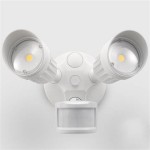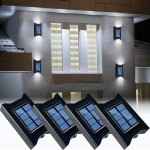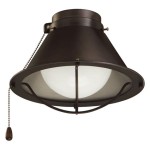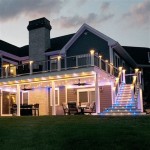Best Outdoor LED Street Lights: A Comprehensive Guide
Outdoor LED street lights are rapidly replacing traditional lighting systems due to their superior energy efficiency, longevity, and performance. Selecting the optimal street light requires careful consideration of various factors, including light output, color temperature, weather resistance, and regulatory compliance. This article provides a comprehensive guide to understanding and choosing the best outdoor LED street lights for different applications.
The fundamental purpose of street lighting is to provide adequate illumination for pedestrians, cyclists, and motorists, improving visibility and safety during nighttime hours. Properly designed street lighting reduces accidents, deters crime, and enhances the overall ambiance of public spaces. Therefore, the selection of appropriate LED street lights is paramount to achieving these objectives.
Traditional street lighting technologies, such as high-pressure sodium (HPS) and metal halide lamps, are significantly less efficient than LED alternatives. LED street lights consume considerably less energy for the same level of illumination, resulting in substantial cost savings over their lifespan. Furthermore, LEDs have a much longer lifespan, reducing maintenance frequency and replacement costs. These factors contribute to a lower total cost of ownership, making LED street lights a financially prudent choice for municipalities and private entities.
The increasing adoption of LED technology in street lighting is also driven by environmental concerns. LEDs do not contain harmful substances like mercury, which is present in some traditional lamps. The reduced energy consumption of LEDs translates directly into lower greenhouse gas emissions from power plants, contributing to a more sustainable environment.
Key Considerations When Choosing LED Street Lights
The selection process for LED street lights should be guided by a thorough understanding of the specific application requirements. Several key parameters must be carefully evaluated to ensure the chosen lighting system meets the needs of the users and the environment.
1. Light Output and Distribution: The light output of an LED street light, measured in lumens, determines the brightness of the illuminated area. The appropriate lumen output depends on the specific application, such as residential streets, highways, or parking lots. Residential areas typically require lower lumen outputs than high-traffic roadways. Equally important is the light distribution pattern, which determines how the light is spread across the surface. Different lens designs and reflector configurations can be used to achieve various light distribution patterns, such as Type II, Type III, Type IV, and Type V. These classifications define the width and direction of the light beam, optimizing illumination for different street widths and layouts.
Uniformity of light distribution is a critical factor for safety and visibility. Non-uniform lighting can create dark spots and glare, hindering visibility and potentially leading to accidents. The illuminance uniformity ratio, calculated as the minimum illuminance divided by the average illuminance, should be within acceptable limits to ensure consistent lighting across the target area. A higher uniformity ratio indicates a more even distribution of light.
Glare is another crucial consideration. Excessive glare can cause discomfort and reduce visibility, especially for elderly drivers and pedestrians. Optic designs and shielding techniques can be employed to minimize glare and improve visual comfort. Choosing LED fixtures with low UGR (Unified Glare Rating) values is recommended for minimizing direct glare.
2. Color Temperature and Rendering: The color temperature of an LED street light, measured in Kelvin (K), affects the perceived warmth or coolness of the light. Lower color temperatures (e.g., 2700K-3000K) produce a warm, yellowish light, while higher color temperatures (e.g., 4000K-5000K) produce a cooler, whiter light. Warmer color temperatures are often preferred in residential areas to create a more welcoming and comfortable atmosphere. Cooler color temperatures may be more suitable for commercial or industrial areas where higher visibility is paramount.
Color rendering index (CRI) is a measure of how accurately a light source renders the colors of objects compared to a natural light source. A higher CRI indicates better color accuracy. While street lighting does not typically require extremely high CRI values, a CRI of 70 or higher is generally recommended to ensure that objects are easily recognizable and colors are accurately perceived. This is particularly important for pedestrian safety and crime prevention.
The spectral power distribution (SPD) of the LED affects color rendering and can have impacts on human health and the environment. Some LEDs emit a significant amount of blue light, which can suppress melatonin production and disrupt sleep cycles. Choosing street lights with reduced blue light emissions can minimize these potential negative effects.
3. Weather Resistance and Durability: Outdoor LED street lights are exposed to harsh environmental conditions, including rain, snow, wind, and extreme temperatures. It is essential to choose fixtures that are designed to withstand these conditions. Ingress Protection (IP) ratings indicate the level of protection against dust and water intrusion. An IP rating of IP65 or higher is generally recommended for street lights to ensure reliable performance in wet and dusty environments. This level of protection ensures that the internal components of the fixture are shielded from the elements, preventing corrosion and electrical failures.
The housing material of the LED street light should also be durable and resistant to corrosion. Aluminum alloys are commonly used due to their strength, lightweight, and corrosion resistance. The finish of the housing should be resistant to fading and chipping, maintaining the aesthetic appearance of the fixture over time. Polycarbonate lenses are also common due to their impact resistance and light transmission properties. However, glass lenses offer better scratch resistance and may be preferred in areas with high vandalism risk.
Temperature management is crucial for the longevity of LED street lights. LEDs generate heat, and excessive heat can reduce their lifespan and performance. Effective heat sinks are necessary to dissipate heat and maintain the operating temperature of the LED chips within acceptable limits. The thermal resistance of the heat sink should be minimized to facilitate efficient heat transfer. The operational temperature range of the LED fixture should be appropriate for the climate in which it will be installed.
Advanced Features and Technologies
In addition to the core performance parameters, several advanced features and technologies can enhance the functionality and efficiency of LED street lights.
1. Smart Lighting Controls: Smart lighting controls allow for dynamic adjustment of light levels based on real-time conditions, such as traffic volume, ambient light levels, and time of day. These controls can significantly reduce energy consumption and improve safety. Dimming schedules can be programmed to reduce light output during periods of low activity, saving energy without compromising safety. Motion sensors can be used to increase light levels when pedestrians or vehicles are detected, providing enhanced security and visibility. Centralized management systems allow for remote monitoring and control of street lights, enabling quick detection and resolution of failures. These systems can also provide valuable data on energy consumption and performance, facilitating optimization and maintenance planning.
Adaptive lighting systems automatically adjust light levels based on ambient light conditions, maintaining consistent illumination throughout the night. These systems use light sensors to detect ambient light and adjust the output of the LED fixtures accordingly. This ensures that the street is adequately lit, even on cloudy or moonlit nights. Adaptive lighting can also reduce energy consumption by dimming the lights during periods when ambient light is sufficient.
2. Wireless Connectivity: Wireless connectivity enables seamless integration of street lights into smart city infrastructure. Wireless communication technologies, such as Zigbee, LoRaWAN, and cellular networks, allow for remote monitoring and control of street lights. This facilitates efficient management and maintenance of the lighting system. Wireless connectivity also enables integration with other smart city applications, such as traffic management systems and emergency response services.
Over-the-air (OTA) updates allow for remote firmware updates to the LED street lights. This ensures that the lighting system is always running the latest software and that security vulnerabilities are addressed promptly. OTA updates also enable the addition of new features and functionalities to the lighting system without the need for physical access to the fixtures.
3. Integrated Solar Power: Solar-powered LED street lights offer a sustainable and off-grid lighting solution. These lights utilize solar panels to convert sunlight into electricity, which is stored in batteries to power the LED fixtures at night. Solar-powered street lights are ideal for locations where grid power is unavailable or expensive to access. They are also a environmentally friendly option that reduces reliance on fossil fuels. The size of the solar panel and battery capacity should be carefully selected to ensure that the light can operate reliably throughout the night, even during periods of low sunlight.
Hybrid systems can combine solar power with grid power, providing a reliable and cost-effective lighting solution. These systems utilize solar power as the primary source of energy and switch to grid power when solar energy is unavailable. This ensures that the street lights are always operational, regardless of weather conditions.
Choosing the best outdoor LED street light involves a careful evaluation of specific needs and priorities. By considering light output, color temperature, weather resistance, and advanced features, one can select a lighting system that provides optimal performance, energy efficiency, and long-term value.

Best Customization Of 8m Street Pole 60w Led Road Light Motion Sensor Lithium Battery And Solar Panel Integrated Waterproof Outdoor China

Alltop High Quality Ip65 Waterproof Aluminum Outdoor Led Solar Street Light

Alltop Best Quality 150w Waterproof Ip65 Smd Integrated Solar Led Street Lights

Pure White Led Outdoor Street Lights For Road Ac 85 265v

Alltop Best Ing Waterproof Ip65 200w Outdoor Lighting Solar Lamp Led Street With Remote Control

Best 15 Outdoor Led Street Light Manufacturers In The World 2024 Updated Sld Solar Lighting

Whole Best 100w 150w 200w 250w Outdoor Deck Energy Powered Panel Flood Motion Sensor Road Battery Garden Wall Led All In One Solar Street Light China

Best Outdoor Led Flood Light Fixtures Oem Manufacturer

Buy Kolors Kythe 20w Cool White Waterproof Outdoor Led Street Light 2411st20 Cw At Best On Moglix

Led Solar Street Light
Related Posts







